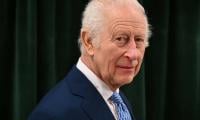The political career of Benazir Bhutto, who was assassinated on December 27, 2007, was a saga of fluctuating fortunes. Twice she was voted to power (1988 and 1993) and twice sacked (1990 and 1996).
Being the heir to the legacy of her father late prime minister Z A Bhutto (ZAB), Benazir Bhutto, like Indra Gandhi in neighbouring India, did not have to start from scratch; she did not have to build a party or carve out a niche for herself. This already existed and all she had to do was to take the legacy forward. Hence, not surprisingly, being the daughter of ZAB remained her most powerful identity – although she had come a long way from the socialist philosophy of her father.
However, being the heir to the powerful legacy of ZAB had its seamy side as well. She inherited the establishment’s distrust of her father, which continued to haunt her throughout her life. She had to face attempts to disintegrate the PPP. Her political career was thus shaped by the tension between populist forces and the establishment. The former voted her to power twice but the latter forced her dismissal on each occasion. On her part, she sought to strike a balance between the demands of the two forces, sometimes with success and at times without success.
The mid-1980s saw some fundamental changes in Bhutto’s stance. She agreed to rub shoulders with the US, a big departure from ZAB’s anti-Americanism, should Washington help her dislodge General Ziaul Haq, who was increasingly losing the trust of his erstwhile masters over the Afghan situation. She discarded socialism in favour of capitalism as the PPP’s economic doctrine. Years of political struggle contributed to replacing the political idealism of her younger days with hard-core opportunism. Hence, by the time she entered the corridors of power, after Zia’s death, she had become a leader of the status quo.
After the 1988 elections, which the PPP narrowly won, Benazir Bhutto agreed to play ball with the establishment on their terms in exchange for getting the PM’s office. The terms included getting elected the then-acting president Ghulam Ishaq Khan (GIK), an arch establishmentarian, in the presidential elections, keeping the incumbent foreign minister in her cabinet, and no civilian meddling in security affairs.
Days before BB was sworn in as prime minister, the caretaker government adopted the International Monetary Fund (IMF) sponsored structural adjustment programme, which in a nutshell defined what the elected government would do and what it would not do in the realm of economic policymaking. It was under that programme that her government announced a privatisation policy – a major reversal of the nationalisation policy of her father and the party’s avowed commitment to socialism.
The marriage of convenience eventually ended when the PPP’s 20-month-old government was dismissed by the president on corruption charges and for allegedly violating the constitution. The presidential charge sheet was subsequently upheld by the Supreme Court.
Her sacking, the heavy defeat in the ensuing elections and persecution all worked to make Bhutto an astute practitioner of realpolitik. Hence, when in 1993 her arch adversary and the then premier Nawaz Sharif, the erstwhile blue-eyed boy of the establishment, fell out with his mentors, Bhutto readily joined hands with GIK in pulling his popularly elected government down.
Benazir Bhutto returned to power in 1993 and had her ‘loyalist’ Farooq Leghari elected to the powerful office of the president. For a while, her government seemed to be well set to complete its five-year term, which had never happened in Pakistan before. But that optimism was misplaced. In three years, the Bhutto government was shown the door.
Like most other Pakistani leaders, Ms Bhutto too tried to strengthen herself at the expense of the institutions. During her second tenure, she appointed a junior judge as the chief justice of Pakistan (CJP). The decision was occasioned by two factors: One, the new CJP Justice Sajjad Ali Shah came from Sindh. Two, he was the only dissenting member of the Supreme Court bench that had shot down Sharif’s 1993 dismissal. Never before in Pakistan had the seniority principle for the CJP’s appointment been disregarded.
Bhutto also appointed a retired Supreme Court judge as CJ of the Lahore High Court and then used his office to make several appointments in the court on the basis of political affiliations. Some of those inductions were so preposterous as to make even her hand-picked CJP voice his concerns publicly. The acrimony led to the apex court’s landmark decision in what is known as the Judges’ Appointment Case (March 1996). The verdict ended the executive’s discretion in the appointment of superior court judges and thus was decried by the government. Later, when Bhutto challenged her dismissal, the Supreme Court with Justice Shah at its head put its seal on the presidential decision.
When PM Sharif was sacked in a coup on October 12, 1999, Bhutto, who was in exile, described the military intervention as necessary for saving the country from ‘civilian despotism’. Beneath Bhutto’s defence of the coup lurked both her acrimony towards Sharif and her keenness to let the new Pervez Musharraf regime know she was willing to work with it. However, her message fell flat on the generals.
Be that as it may, Bhutto still had some cards left on her deck. All she needed was an appropriate moment to play those cards. And it did come. Towards the end of his rule, General Musharraf, like Zia in the mid-1980s, was becoming increasingly unpopular with the Americans for failing to live up to their expectations in the war on terror. Around that time, Musharraf sacked CJP Iftikhar Chaudhry over his judicial activism. The decision turned out to be remarkably fateful, as it ushered in a massive lawyer-cum-political movement against the dictator, striking heavy blows at his hitherto unchallenged position.
On his part, Musharraf, who was eying his re-election at the end of 2007, needed both popular and political support, which only the PPP could provide (for obvious reasons Sharif wasn’t an option). Thus, the regime was forced to reach out to Bhutto, who was still living in exile and who had recently signed the Charter of Democracy with her erstwhile political rival Sharif.
For Bhutto, it was a godsend opportunity, and she was shrewd enough not to let it go. Having convinced the Americans that in those circumstances she was their best – if not the only – option, she struck a deal with the Musharraf regime on her terms. The deal is known as the National Reconciliation Ordinance (NRO), which in one go terminated all ‘politically motivated’ cases filed against Pakistan’s political leaders including Bhutto, her spouse, and Sharif. A couple of years later, the NRO was struck down by the judiciary for being manifestly unconstitutional.
According to Mark Siegel, American author, lobbyist, and Bhutto’s personal friend, even after the NRO had seen the light of day, before leaving for Pakistan, the former PM wanted some guarantee that the regime wouldn’t block her way to power. Evidently, only Washington could give such an assurance, which it did when the then US Secretary of State Condoleezza Rice made a short telephonic call to Bhutto in Dubai. That must have been the most anxiously awaited call of her life.
A week later, Benazir Bhutto landed in Karachi. Now only death could block her way to PM House. Tragically, it did.
The writer is an Islamabad-based columnist. He tweets/posts @hussainhzaidi and can be reached at: hussainhzaidi@gmail.com















